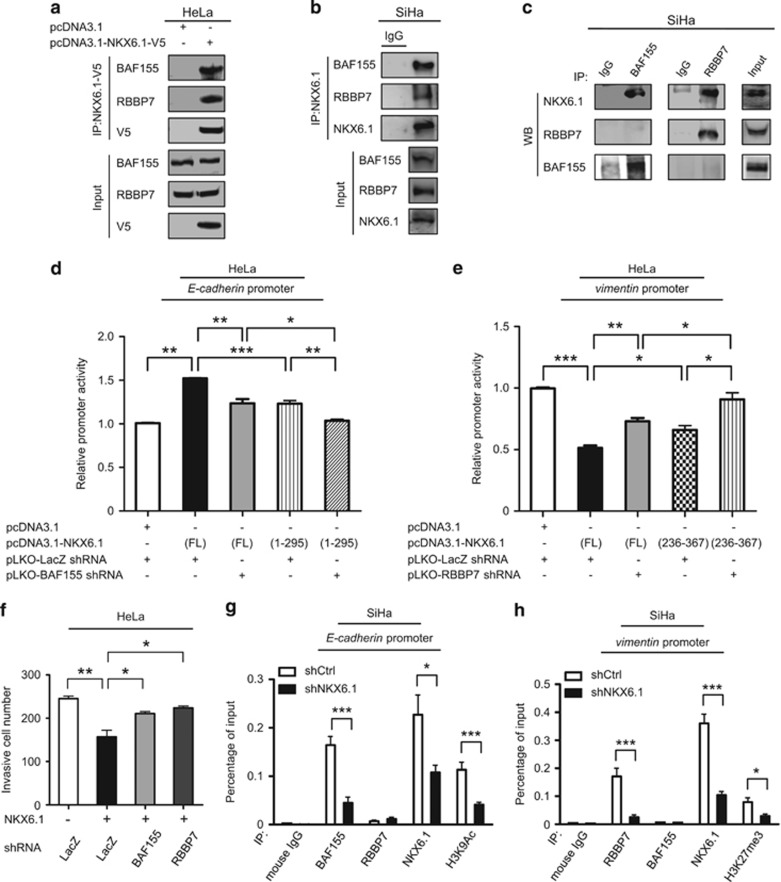Figure 7.
NKX6.1 suppresses EMT by interacting with the BAF155 (coactivator) and RBBP7 (corepressor) epigenetic modifiers. (a) Immunoprecipitates were prepared from HeLa cells after transfection with V5-tagged NKX6.1. (b and c) To identify interactions between endogenous NKX6.1 with BAF155 or RBBP7, immunoprecipitates were prepared from SiHa cells (no transfection). Cell lysates and immunoprecipitates obtained with anti-NKX6.1 (IP: NKX6.1) antibodies were blotted with anti-BAF155, anti-RBBP7 and anti-NKX6.1 antibodies (b); those obtained with anti-BAF155 (IP: BAF155) or anti-RBBP7 (IP: RBBP7) antibodies were blotted using anti-BAF155, RBBP7 and NKX6.1 antibodies (c). (d and e) HeLa cells transfected with the E-cadherin luciferase construct (d) or vimentin luciferase construct (e), and the indicated expression vectors were analyzed by a luciferase reporter assay. (f) HeLa cells were transfected with the indicated combinations of vectors, and Matrigel invasion assays were used to analyze the effects on cancer invasion. (g and h) Chromatin from SiHa cells expressing NKX6.1 shRNA was immunoprecipitated with indicated antibodies and then analyzed by quantitative PCR using E-cadherin-specific primers (g) or vimentin-specific primers (h). The data are presented as the mean±s.e. from three independent experiments in triplicates (analyzed by unpaired two-tailed t-test). *P<0.05, **P<0.01 and ***P<0.001.

